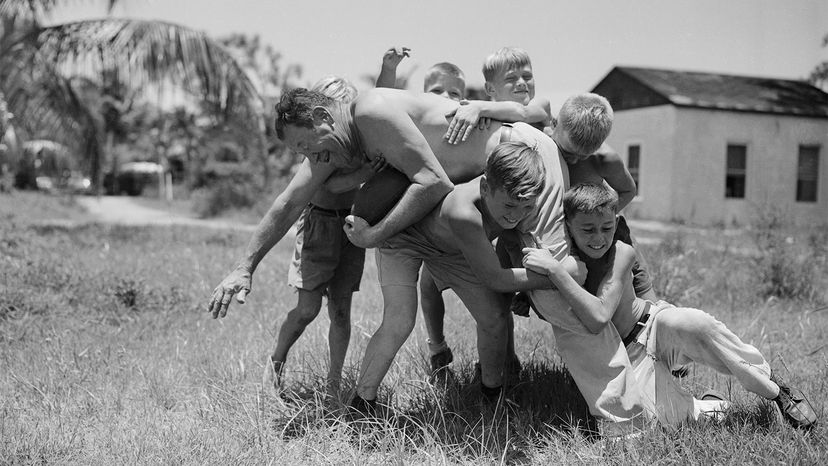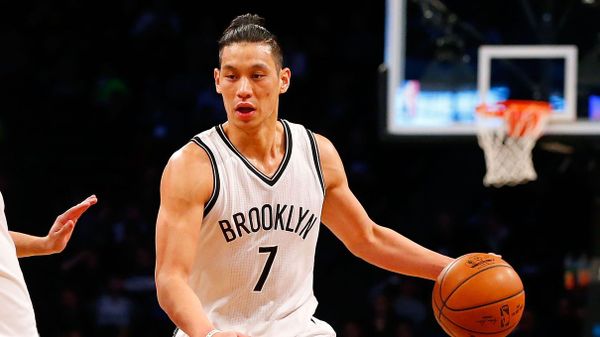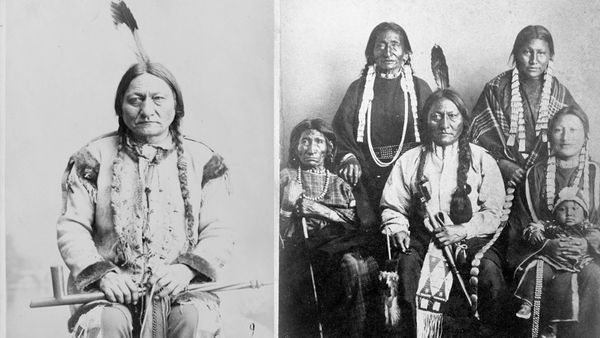To appreciate how Jim Thorpe became the greatest, you have to understand where he started. Born to parents of European and Native American heritage, Thorpe was raised in Indian Territory — what is now Oklahoma — as a member of the Sac and Fox tribe. It was a hard upbringing during which he was sent away to school (and ran away from school) several times. His twin brother died when he was 9. His mother died in childbirth a couple years later.
After leaving school altogether to work on a horse farm, Thorpe's no-nonsense father finally sent his son away to the Carlisle Indian School, a government-sponsored boarding school in Pennsylvania. The Native Americans who lived there were stripped of the vestiges of their old lives — their hair cut, clothed in Western garb, forbidden to speak their native languages — in an attempt to assimilate them into white culture.
Separated from his family, hundreds of miles from home, and forced to learn a different culture, Thorpe thrived. The reason was simple: athletics. Specifically, the fledgling sport of American football.
Thorpe had played football in one of his previous schools, but under Carlisle's legendary coach, Glenn "Pop" Warner, he became a sensation. Though initially considered too small to play, Thorpe grew into a big, punishing runner and kicker. Warner would later say of Thorpe:
No college player I ever saw had the natural aptitude for football possessed by Jim Thorpe. I never knew a football player who could penetrate a line as Thorpe could, nor did I ever know of a player who could see holes through which to break as could the big Indian. As for speed, none ever carried a pigskin down the field with the dazzling speed of Thorpe.
Carlisle became a national powerhouse, and Thorpe a two-time All-American. In November of 1912, Thorpe led Carlisle in a game against Army and a young cadet named Dwight D. Eisenhower. The importance of the game — one in which a school of Indians faced off against a team filled with the sons and grandsons of the soldiers who killed thousands of Indians and forced them from their homelands — was not lost on anyone there. Carlisle won, 27-6.
By that time, Thorpe already had become a worldwide hero at the Stockholm Olympics — representing the United States though Native Americans did not have citizenship — after winning both the decathlon and the pentathlon by unprecedented margins. His performance prompted Sweden's King Gustav V to tell him, "Sir, you are the greatest athlete in the world."
But Thorpe's performance at the Olympics unveiled more: With his dominance, Thorpe showed that athletics were no longer the sole purview of rich, white Europeans.
"In an era when White Anglo-Saxon Protestants, WASPs, governed everything — they governed the Olympic committee, they governed the Ivy League colleges, they called the shots, they were seen as the elite — anybody who was not a WASP in general, whether you were Indian, Jewish, Italian, Irish, Catholic, Asian, you were not seen as part of the power structure," Buford says. "Part of the reason that people embraced Thorpe so much is that they loved guys who could come out and beat the big boys at their own game."




